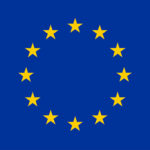Drug Insert Translation
If you need drug inserts translated, request a quote now.
Referred to as prescribing information in the United States and a patient information leaflet (PIL) or a package leaflet in Europe, a drug insert serves two main purposes. First, to provide consumers with directions on the right way to use the drug and how much to take. Second, to make consumers aware of any health risks associated with the drug. Global market success means lots of labels in different languages and configurations.
For pharmaceutical companies, drug inserts are required for regulatory compliance and critical to user safety in global markets. That’s why it is so important that drug inserts be translated as accurately as possible when a foreign-language version is called for.
Regulations Governing Consumer Medical Information
Drug inserts accompany both prescription drugs and over-the-counter drugs. Yet what information the drug insert is required to contain, how the information is presented and even what language (or languages) the drug insert is supposed to use can vary widely. Here are some examples:
In the United States, the Food and Drug Administration mandates that prescribing information for pharmaceutical drugs be in English. If your distribution is limited to Puerto Rico, Spanish-only labeling is allowed, but if you plan to market your drug in Puerto Rico as well as the continental US, then English must be present.
In Canada, drug inserts for pharmaceutical drugs that are openly sold to the public must be in both English and French. However, prescription drugs and drugs destined for hospitals and clinics only do not necessarily require bilingual labeling.
 In the European Union, drug inserts (patient information leaflets) are required to be printed in the official languages where the drug is sold. That includes Spanish in Spain, Estonian in Estonia and so on. If the drug is sold in multiple countries and thus the insert contains multiple languages, the information available must be the same in each language.
In the European Union, drug inserts (patient information leaflets) are required to be printed in the official languages where the drug is sold. That includes Spanish in Spain, Estonian in Estonia and so on. If the drug is sold in multiple countries and thus the insert contains multiple languages, the information available must be the same in each language.
The key is that where you plan to distribute or market a pharmaceutical drug will determine which regulatory agency and which regulations you need to comply with.
What Do Drug Inserts Include?
While the exact regulatory requirements vary from country to country, some of the most common elements that appear on drug inserts include:
- Name: The name of the drug, including its trade, generic and chemical names.
- Indications: What conditions a drug should be used for, by whom and in what situations.
- Contraindications: The circumstances in which a person should NOT use the drug.
- Warnings: Possible side effects and adverse events.
- Dosage and Administration: How much of the drug someone should use and how to use it.
- Storage: The recommended environment and temperature for drug storage.
- Expiry Date: How long the drug is expected to be good until.
Common Languages for Drug Insert Translation
The biggest single-country markets for pharmaceutical drugs are the United States, Japan, China, Germany and France. Unsurprisingly, some of the most common languages for drug insert translation are English, Spanish, French, Japanese, Chinese and German.
As a region, the greater European pharmaceutical market is an important one and we see a lot of demand for drug insert translation into multiple European languages. In addition, a number of major pharmaceutical companies have been expanding their horizons lately, making smaller language markets an increasingly common audience for drug insert translation.
Experts in Pharmaceutical Translation
Responsive Translation is your trusted partner for drug insert or PIL translation. We have teams of experienced translators who specialize in pharmaceutical translation for a wide range of language pairs. From start to finish, every translation Responsive Translation does undergoes a rigorous quality assurance process to ensure the highest accuracy and regulatory compliance possible.
For consultations or more information on our pharmaceutical translation services, please don’t hesitate to contact us at +1-212-818-1102 or [email protected].
